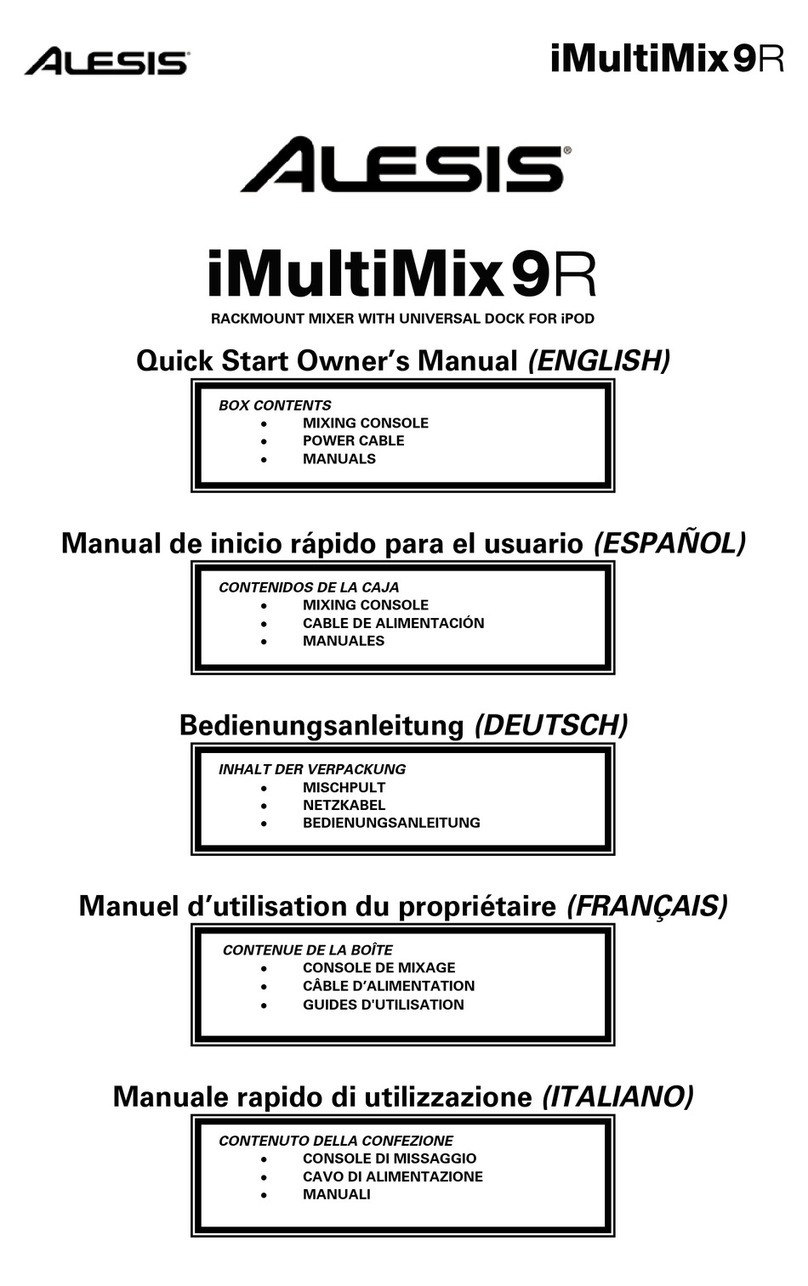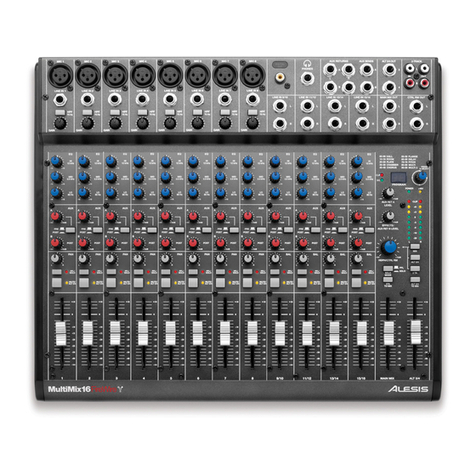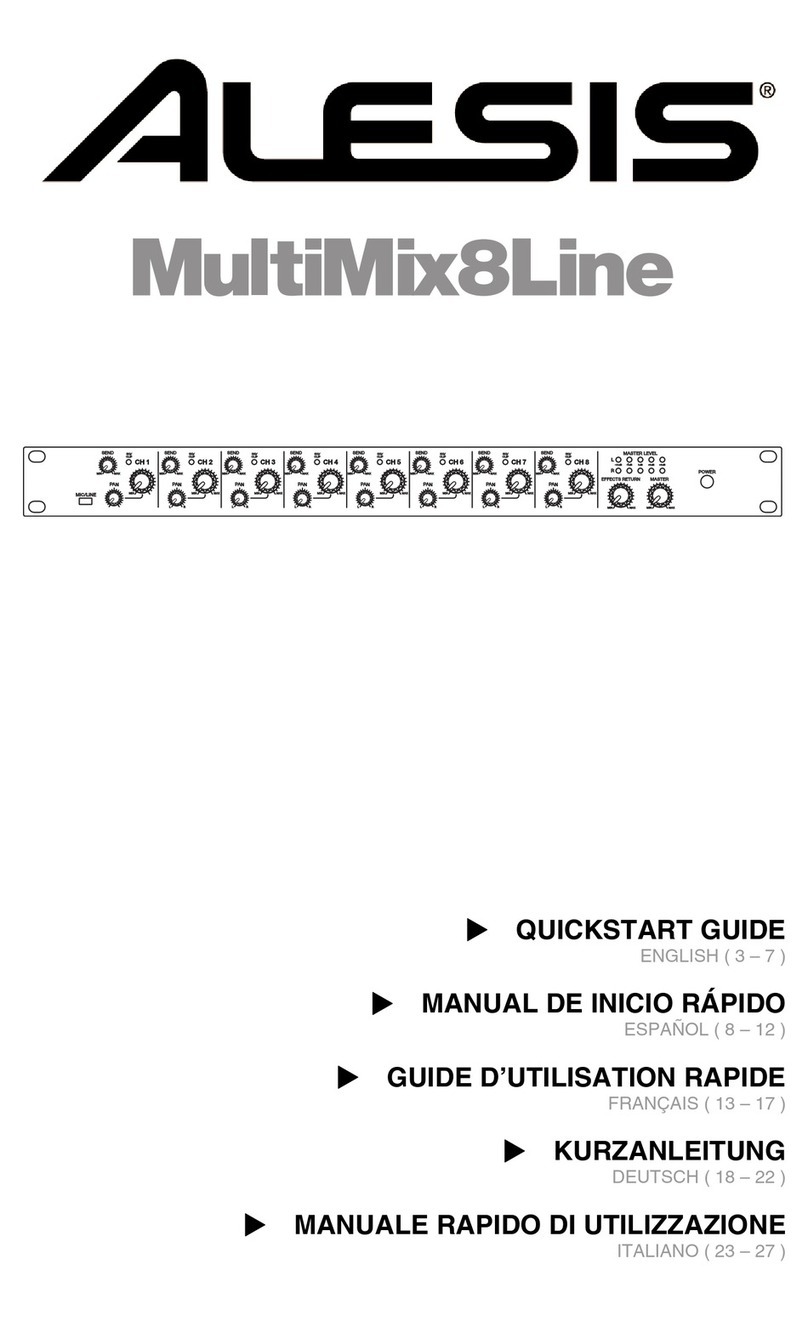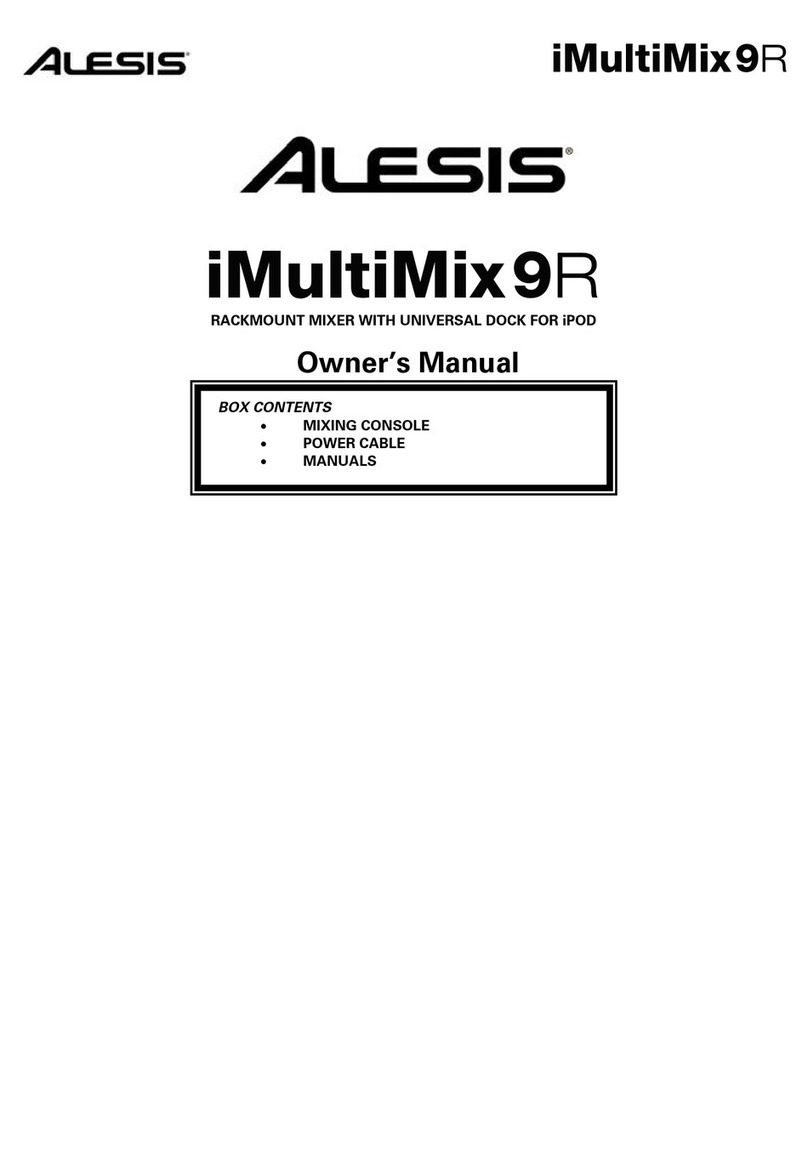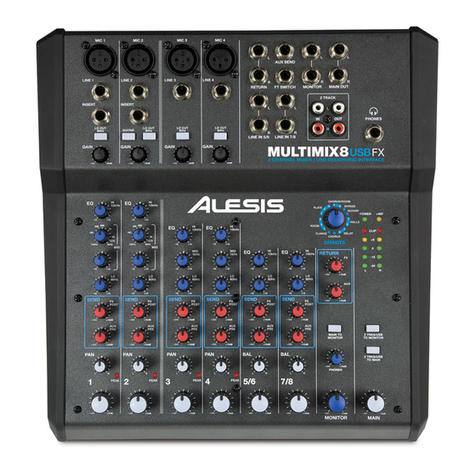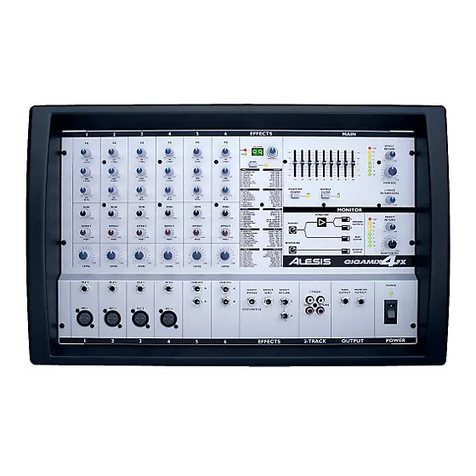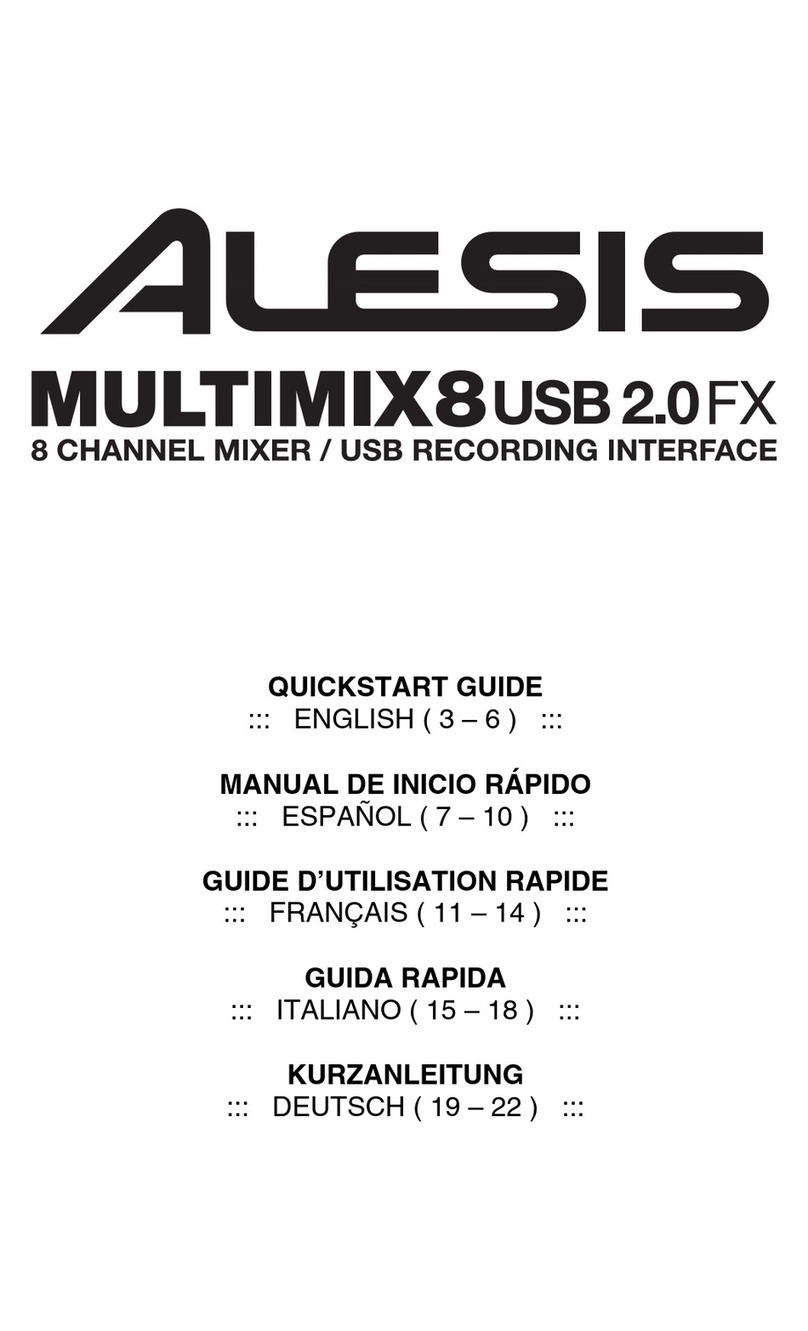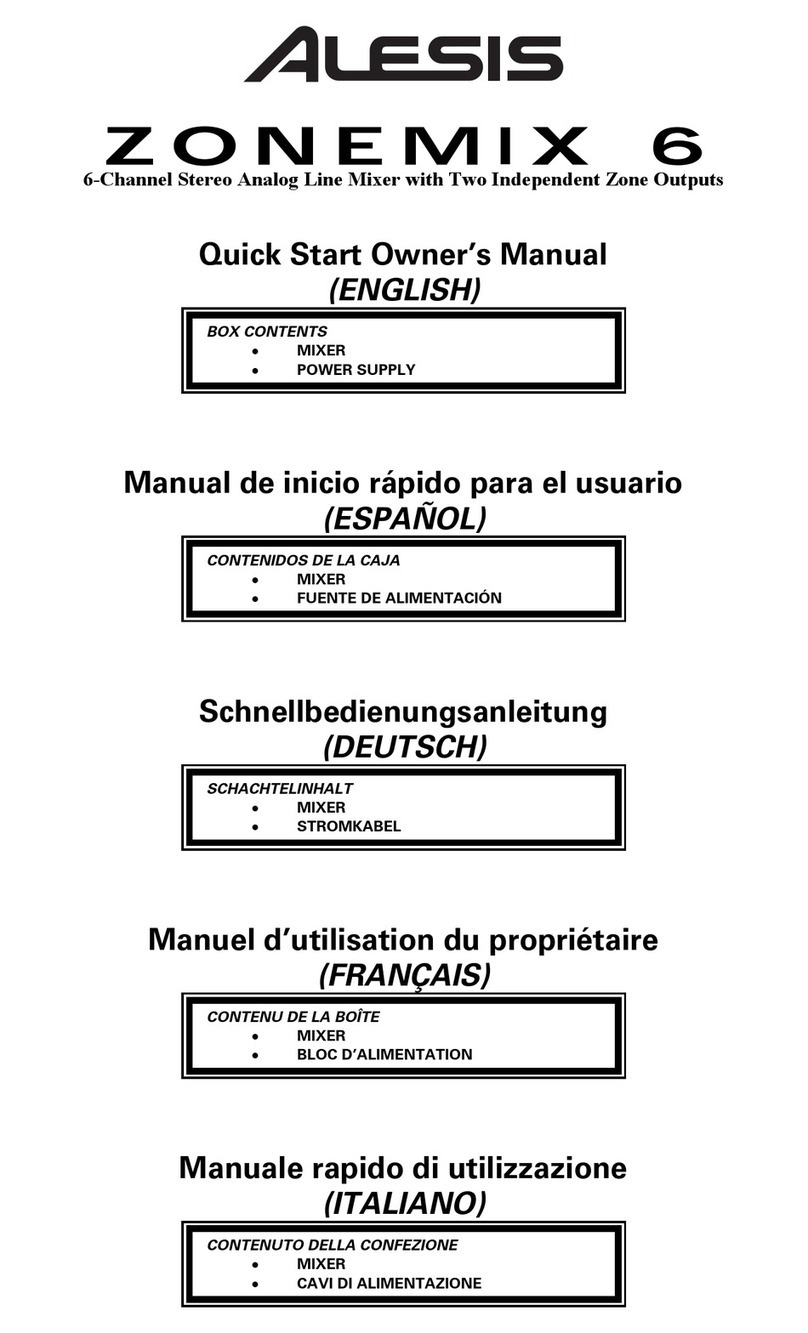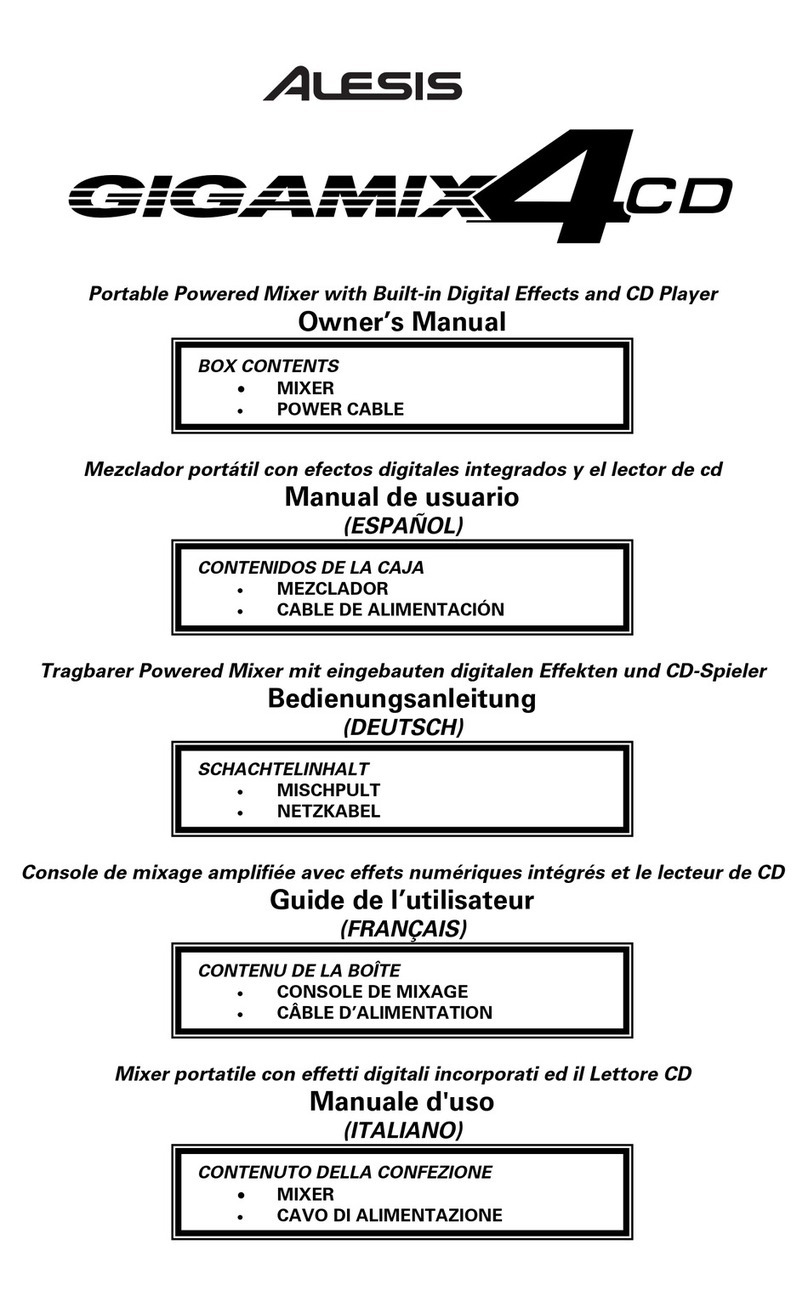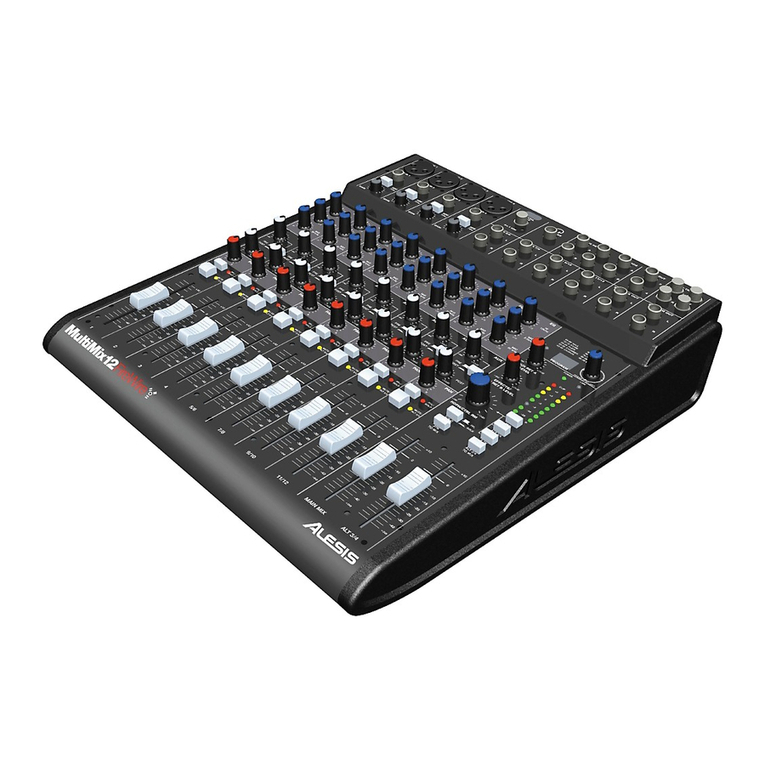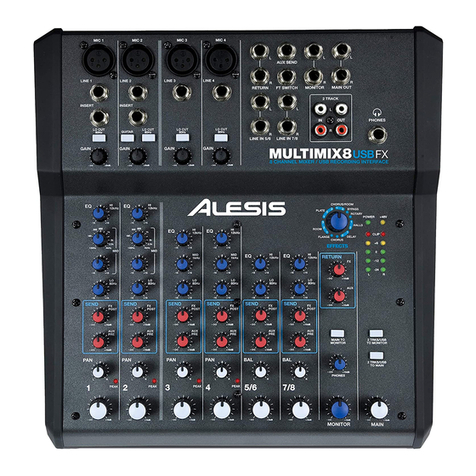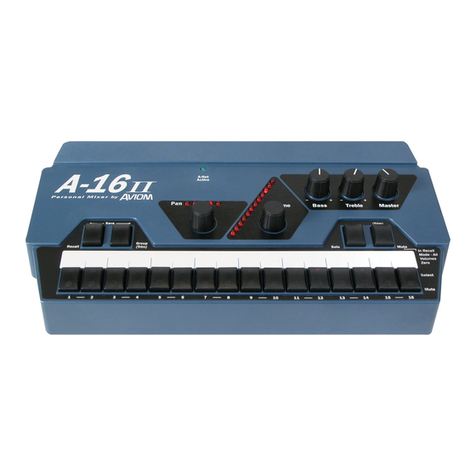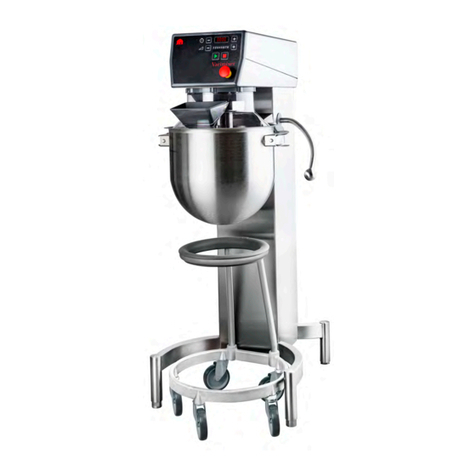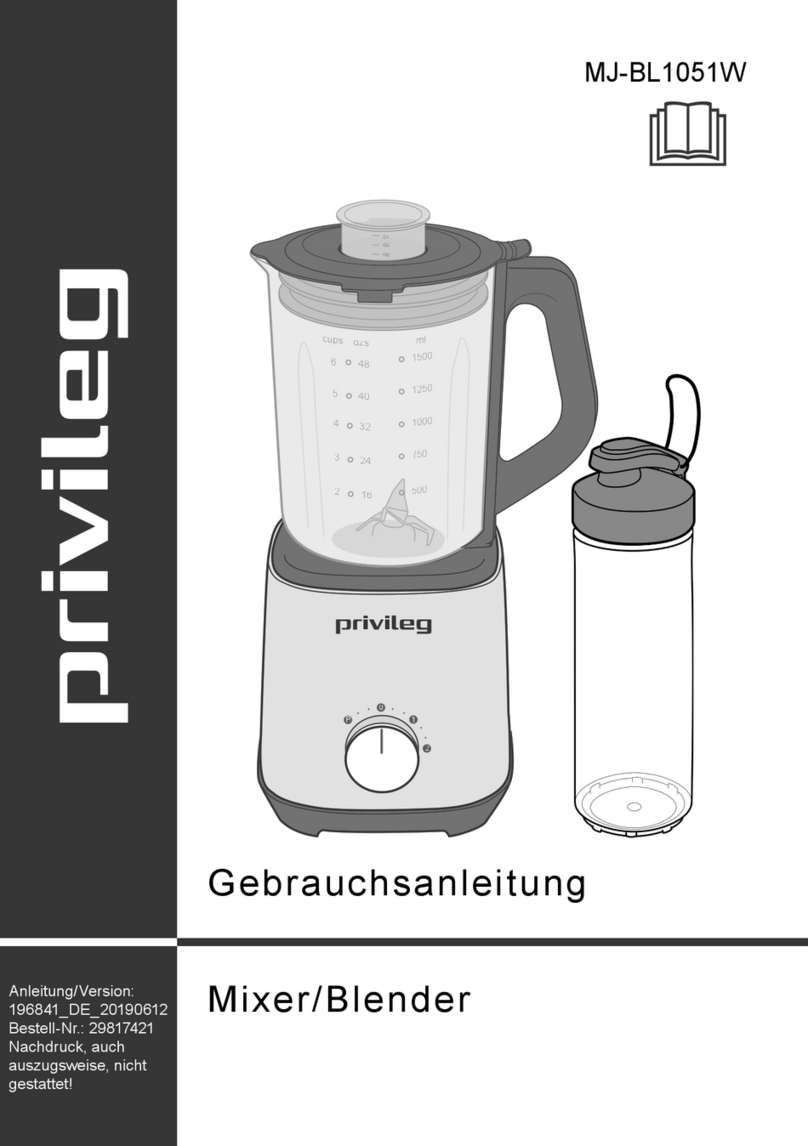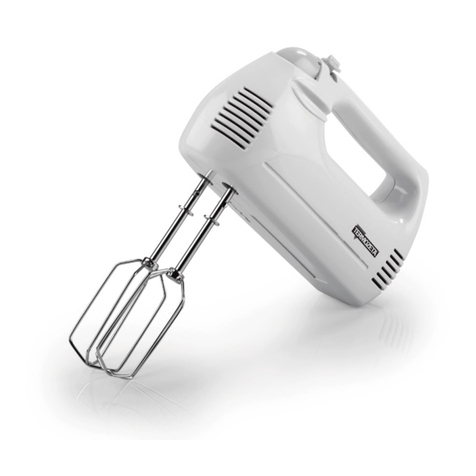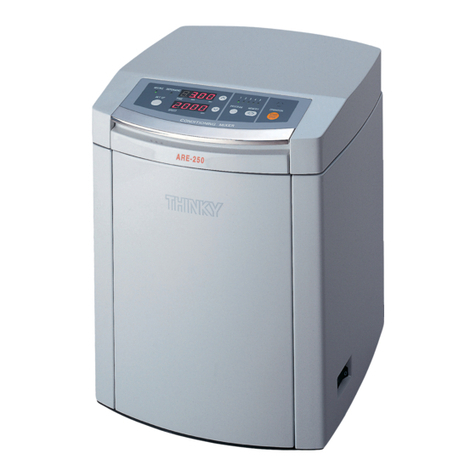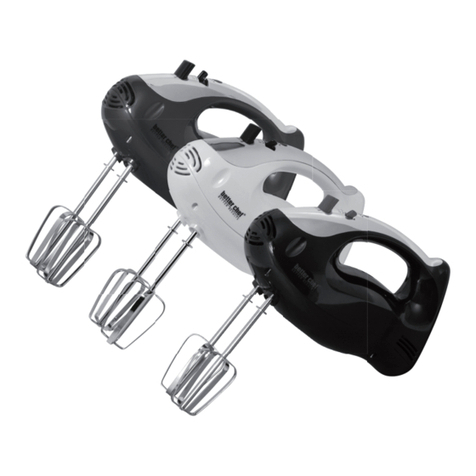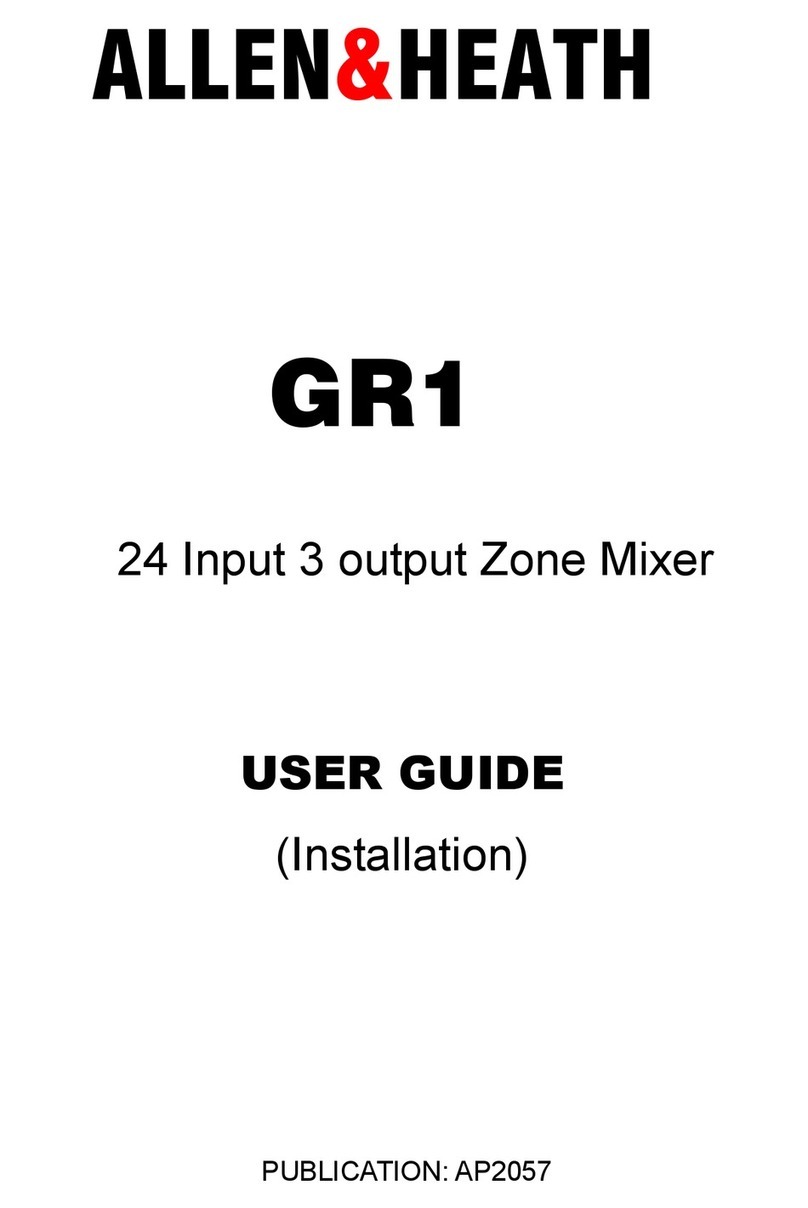8
CARATTERISTICHE PANNELLO POSTERIORE
1. INGRESSO DI ALIMENTAZIONE – Servirsi
dell’adattatore di alimentazione in dotazione
per collegare il MultiMix 6 USB ad una presa
di alimentazione. Ad alimentazione spenta,
collegare l’alimentazione elettrica innanzitutto
nel MultiMix 6 USB, quindi ad una presa elettrica.
2. INTERRUTTORE DI ALIMENTAZIONE (POWER) – Accende e spegne il MultiMix 6 USB. Accendere il
MultiMix 6 USB dopo aver collegato tutti i dispositivi d’ingresso e prima di accendere gli amplificatori.
Spegnere gli amplificatori prima di spegnere il MultiMix 6 USB.
3. PORTA USB – Servirsi del cavo in dotazione per collegare il MultiMix 6 USB ad un computer per una
comunicazione audio digitale a 2 vie, a 16 bit. Il MultiMix 6 USB richiede una porta USB 1.1 o superiore
(es. USB 2.0).
CARATTERISTICHE PANNELLO SUPERIORE
1. LED DI ALIMENTAZIONE – Si illumina
quando il MultiMix 6 USB è acceso.
2. INGRESSO MICROFONO – Collegare
un microfono a questo ingresso
servendosi di un cavo XLR.
3. INGRESSI DI LINEA – Collegare
dispositivi a livello di linea servendosi di
i cavi 1/4".
4. HPF (filtro passa-alto) – Quando si
preme questo pulsante, il filtro passa-
alto del canale si attiva, eliminando le
frequenze al di sotto di 75 Hz per ridurre
qualsiasi rumore a basso livello.
5. INTERRUTTORE GUITAR / LINE
(Chitarra / Linea) – Quando questo
interruttore è abbassato, il Canale 1
fungerà da ingresso ad elevata
impedenza per il collegamento di
chitarre o bassi. Quando l’interruttore è
alzato, il Canale 1 accetterà segnali mic
o a livello di linea.
6. MAIN OUT (uscita principale) –
Servirsi di cavi standard 1/4" per
collegare questa uscita Master ad una cassa o ad un sistema di amplificatori. Il livello di questa uscita è
controllato tramite la manopola MAIN VOL (volume principale).
7. CUFFIE – Collegare le cuffie da 1/4" a questa uscita.
8. GAIN – Regola il livello di guadagno audio pre-fader e pre EQ del canale.
9. VOLUME – Regola il livello audio sul canale.
10. PAN CANALE – Regola l’equilibrio sinistra-destra dell’audio del canale.
11. CHANNEL BASS (bassi di canale) – Regola le frequenze basse (bass) del canale.
12. CHANNEL TREBLE (acuti di canale) – Regola le frequenze alte (treble) del canale corrispondente.
13. BALANCE (CH 3/4 & 5/6) – Regola il bilanciamento tra i canali 3 e 4 e i canali 5 e 6.
14. ALIMENTAZIONE PHANTOM – Questo interruttore attiva e disattiva l’alimentazione phantom. Quando
attivata, l’alimentazione phantom fornisce +48V a entrambi gli ingressi mic XLR. Va notato che la
maggior parte dei microfoni dinamici non richiede alimentazione phantom, mentre la maggior parte dei
microfoni a condensatore sì. Consultare la documentazione del microfono per scoprire se necessita di
alimentazione phantom.
15. MAIN VOL (VOLUME PRINCIPALE) – Regola il volume di uscita MAIN OUT (uscita principale).
16. VOLUME CUFFIE – Regola il livello del volume dell’uscita cuffie.
17. INDICATORE DI LIVELLO STEREO – Monitora il livello audio di uscita MAIN OUT (uscita principale).
1
23
1
2
33
3
3
6
6
3
37
88
9
12
11
10
999
12 12
13 13
14 17
11 11
16
15
10
44
5
2
